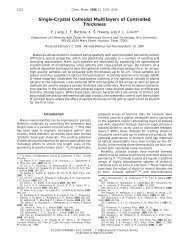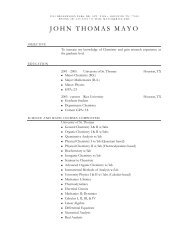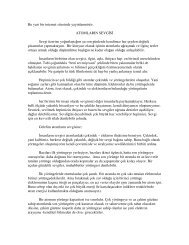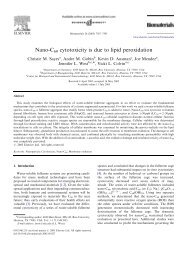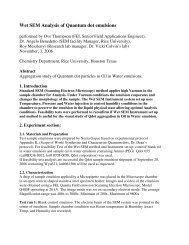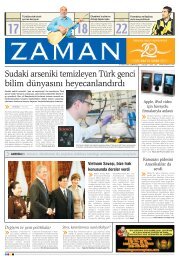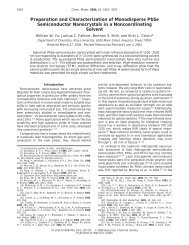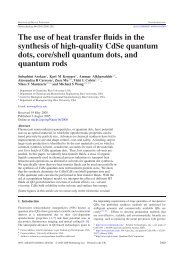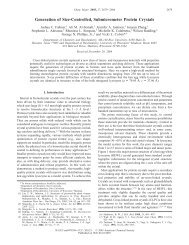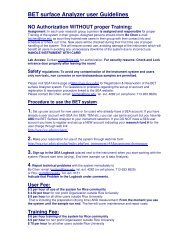Magnetic Separation: Industrial and Lab Scale Applications
Magnetic Separation: Industrial and Lab Scale Applications
Magnetic Separation: Industrial and Lab Scale Applications
You also want an ePaper? Increase the reach of your titles
YUMPU automatically turns print PDFs into web optimized ePapers that Google loves.
<strong>Magnetic</strong> separation based protein analysis <strong>and</strong> detection systems on chips are of great<br />
interest for early diagnosis for fatal infections. Biobarcoded magnetic beads (Nam 2003<br />
Science), microfluidic biochemical detection system (Choi 2002 <strong>Lab</strong>OnaChip),<br />
micromachined magnetic particle separator (Ahn 1996) are prominent examples of this<br />
field.<br />
Recently, nanorods of Ni with Au edges were successfully used to remove His-tagged<br />
proteins with 90% recovery (Lee 2004 Angew<strong>and</strong>te).<br />
c. Cell separation<br />
Similar to protein purifications, magnetic separations offer rapid quantification, high<br />
cell recovery when compared to the conventional methods, i.e. centrifugation (Chang<br />
2005 J Ind Microbiol). As early as 1977, 99% recovery of neuroblasioma cells was<br />
obtained in a matter of minutes (Kronick 1977 Science). Same year, magnetic separation<br />
of red blood cells <strong>and</strong> lymphoid cells were also introduced (Molday 1977 Nature).<br />
<strong>Magnetic</strong> separation of cells is advantageous over the conventional methods mainly<br />
because it lets target cells to be isolated directly from the medium, i.e. blood, bone<br />
marrow, tissue homogenates, stool, cultivation, media, food, water, soil etc (Safarik<br />
1999 JChromB).



